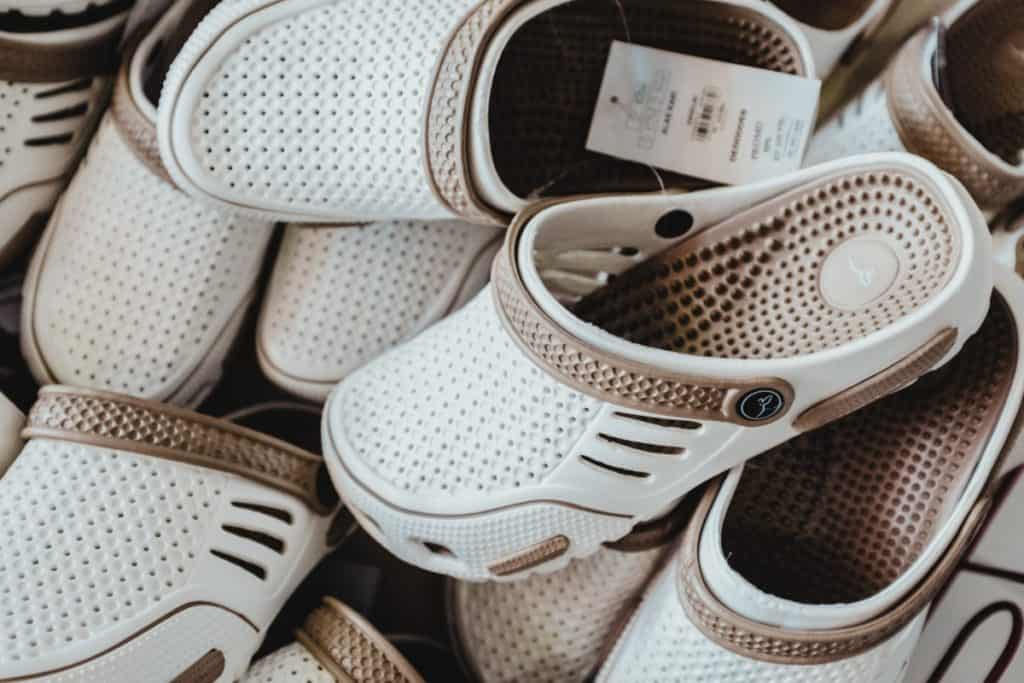
For many, the idea of working in a scorching hot kitchen seems more than they can handle. Picture a barmy summer’s day, the chef is in the kitchen with orders coming in and all the stoves blazing; we begin to picture a pretty uncomfortable environment to work in.
But is that the truth, Do chefs brave the kitchen heat without a complaint leaving their lips? Or are there possibly some tips and tricks we can learn that help everyone stand the heat?
With these questions in mind I have put together a comprehensive guide to the 14 most used professional tips and tricks to help chefs stay cool in the kitchen.
The main techniques chefs use to stay cool in the kitchen are: wearing lightweight breathable clothing, having a good quality extract fan system and taking regular breaks to cooler areas of the kitchen. These are perhaps the least surprising methods but there are many more that add up to one chilled chef.
Wearing An Iced Cloth Around Their Neck
Whilst it may not provide hours of relief this can certainly help. If you’ve ever wondered why some chefs choose to wear neck scarfs, this is the reason. The scarf or tea towel can be soaked in ice and then worn around the neck, providing some instant relief.
This is quite an extreme measure and only done on the hottest of days, but it is a weapon in the keeping cool arsenal none the less.
Having A Good Quality Extract Fan System
The importance of this aspect of a professional kitchen cannot be underestimated. It is perhaps the number one reasons why chefs are able to work when the temperature is scorching outside.
cannot be underestimated. It is perhaps the number one reasons why chefs are able to work when the temperature is scorching outside.
Imagine a kitchen extract fan at home but on steroids. The whole area of the stoves and griddle is covered by the fan, and although it is noisy, it does a great job at removing a lot of the heat.
Fans can be turned up or down. Especially hot days – turn it all the way up. On colder days – turn it down to allow more of the heat to stay in the kitchen. As mentioned though, the downside of a fan running at full speed is the noise levels get unmanageable, therefor a happy compromise is usually found.
This is a great video demonstrating how industrial a kitchen extraction system really is!
Low Level Fans
Something becoming more common in kitchens, especially in warmer climates, is placing fans at low levels. Benches that chefs work on typically have a shelf about a foot off the ground. This is a great place to plug a fan in.
The low level nature means that the cooling breeze is circulated around the kitchen keeping the chefs cool, but as they are low, the breeze does not make the food placed higher up go cold. Genius!
Keep The Stoves Off As Much As Possible
It’s amazing the difference it can make having the stoves set to as low temperature as possible. This especially applies to electric stove tops. There will often be large stock pots bubbling away for hours on the stoves. By turning the temperature down to the minimum required, a lot less heat is released into the kitchen in general.
bubbling away for hours on the stoves. By turning the temperature down to the minimum required, a lot less heat is released into the kitchen in general.
An added benefit is the environmental (and Financial) plus of using less energy – a win-win for everyone.
Wear Cool Uniform Colours
White is the traditional colour of uniforms  as it helps keep the wearer cool. Darker colours, such as black, typically absorb more heat. Anyone who has sat outside in the sun in a black t-shirt will know this feeling!
as it helps keep the wearer cool. Darker colours, such as black, typically absorb more heat. Anyone who has sat outside in the sun in a black t-shirt will know this feeling!
However, as uniforms have modernised they are now made from very breathable cottons. Some chefs find there is no difference in the cooling properties offered by the different colours.
Some may disagree, but in my opinion having worn both white and darker colours, white is definitely more comfortable to wear in the heat.
Swapping Traditional Uniform For T-Shirts
To help beat the heat some kitchens are favouring t-shirts over the more traditional chef whites . T-shirts have the advantage of being thinner and lighter weight, both great properties when trying to stay cool.
. T-shirts have the advantage of being thinner and lighter weight, both great properties when trying to stay cool.
T-shirts should ideally be loose fitting as anything too tight will cling to the skin, possibly causing heat rashes. Loose fitting clothing is also a must as it allows for quick removal should a hot pan be spilt!
Slip On Shoes

On the subject of cooling uniform perhaps the most important item is what a chef wears on their feet. When starting a career the chances are a new chef will be given a pair of standard kitchen shoes. Similar to leather trainers but with a non-slip sole and possibly a steel toe cap for safety. Very quickly a beginner chef realises this type of footwear does not help in the keeping cool department.
will be given a pair of standard kitchen shoes. Similar to leather trainers but with a non-slip sole and possibly a steel toe cap for safety. Very quickly a beginner chef realises this type of footwear does not help in the keeping cool department.
Many chefs move on to choose slip on shoe options , such as non-slip crocs or Birkenstocks. These designs are a lot more open and allow the air to circulate. Some chefs even choose to go sock-less to help maintain the cool.
, such as non-slip crocs or Birkenstocks. These designs are a lot more open and allow the air to circulate. Some chefs even choose to go sock-less to help maintain the cool.
Walk In Fridge Breaks
Taking a cooling break does not have to be for very long, or even to a walk in fridge. Anywhere that is slightly cooler will do and gives that few minutes of rest bite from the heat. These little rest bites are actually quite important to help keep not only physically cool but also mentally cool during a busy service.
Great cooling options that chefs will find a reason to go to are:
- Walk in Fridge
- Walk in Freezer
- Pastry section
- Larder Section
- Outside herb garden
Cigarette, Or Fresh Air Breaks
Even though being a chef is about having a great palette and being able to discern among complex flavours, a large number of chefs choose to smoke . The chance to get outside for a break is perhaps the number one reason why smoking is so common among kitchen staff. Being able to pop outside for 5 minutes not only helps cool down but allows some much needed down time in an otherwise stressful day.
. The chance to get outside for a break is perhaps the number one reason why smoking is so common among kitchen staff. Being able to pop outside for 5 minutes not only helps cool down but allows some much needed down time in an otherwise stressful day.
As a non-smoker myself, I used to take ‘fresh air’ breaks. We used to laugh about how much fresh air I was actually getting as I would sit with the smokers at the same time. This I found to be a great way to cool off and have a minny break without actually needing to smoke!
Adapting Uniform
Adapting uniform can be anything from cutting sleeves shorter, wearing shorts , removing top buttons or wearing an apron only around the waste. There is one more, less obvious adapting….
, removing top buttons or wearing an apron only around the waste. There is one more, less obvious adapting….
This technique should be added in here as I have seen it done, although never myself and wouldn’t necessarily recommend it to anyone else. One chef I knew chose to cut holes in the crotch of his trousers. They were not visible to others, but he was adamant they kept him extra cool.
Closing Blinds
Those living in warmer climates have known for thousands of years that if you block the sun from entering, the inside space can maintain a much lower temperature. On a recent trip to France, the shutters on the windows reminded me of this simple technique that still has its place today.
Although no one really wants to block out all the light from a kitchen using blinds on the windows, it is often necessary to help maintain the cool. Perhaps an explanation of why many chefs develop a slightly pasty complexion?
complexion?
Keeping Doors Open
Having open doors can be a great way to create a through draft and help the air inside stay fresh. Chefs are constantly going in and out during the day so rather than have a constant battle to keep the door shut, they are often just propped open and have some form of hanging sheets to prevent insects and bugs from flying in.
Working On The Cooler Sections
Certain sections , namely the larder and the pastry section, are set up to be as cool as possible. This is due to the type of dishes they are preparing there. These sections may be specific air conditioned parts of a kitchen or simply an area which has been designated as the coolest place available.
, namely the larder and the pastry section, are set up to be as cool as possible. This is due to the type of dishes they are preparing there. These sections may be specific air conditioned parts of a kitchen or simply an area which has been designated as the coolest place available.
Regardless of the actual location, a hot day can be a great excuse to take your prep work into one of the other chefs sections for a friendly catch up (and to enjoy their cool air!) On especially hot days it’s not uncommon for the Chef de Partie on the larder section to find his or herself to be the most popular chef in the kitchen!
on the larder section to find his or herself to be the most popular chef in the kitchen!
Get Acclimatised To The Heat
The final way which chefs manage to stay cool in the kitchen is that they become acclimatised to it.
When visiting a hot country on holiday we all find the heat hits us as soon as we get off the plane. As the holiday progress we get more and more use to it until we arrive home and find ourselves wrapped in woolly jumpers as we acclimatise back.
Kitchens are no exception. At first the heat can be pretty energy sapping but over weeks, months and years a chef adapts and gets accustomed to it.
but over weeks, months and years a chef adapts and gets accustomed to it.
